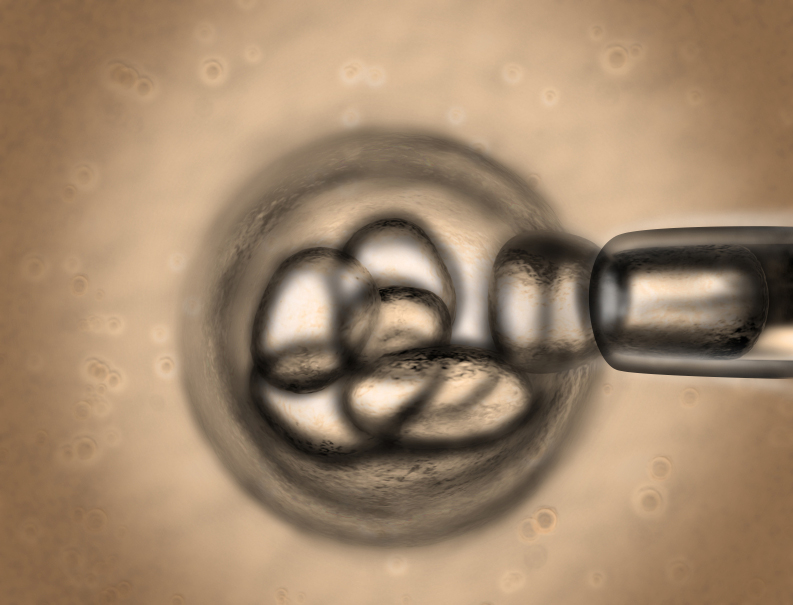On July, 7th 2010, the French Parliamentary office for scientific and technological assessment (OPECST) published its report on the research on stem cells. Written by the MPs Alain Claeys and Jean-Sébastien Vialatte within the framework of the revisions of Bioethics laws, it strikes with its radicalism.
Refusing to come to terms with the problem or swan song, this report recommends all the transgressions of the research in cell therapy until the creation of human-animal embryo hybrids (cybrids). It is still prohibited, on a rational level, by a lot of contradictions and appearing lightness. The proposal of creating human-animal embryos, for instance, is not documented: “the creation of cybrids cannot be proved to be indispensable” confess the authors but they intend to justify this major transgression, subject to availability of human oocytes, by declaring that it is an old technique “to which we often resorted” (but the oldness is not an ethical criterion) and “which allowed the research to progress“. Yet we read later that only Great Britain authorised these researches after lively national debates, and that the teams which initiated them since then have abandoned them.
Erasing the borders of the being
Beyond the casual semantic shift, the report affirms that the discovery of the extraordinary cell plasticity of the IPS, changed the borders of the being. Thus it proposes a legal gradualism parallel to an appearing progressive humanisation. This gradualism would particularly allow introducing the notions of pre-embryo or pre-implantation of embryo aligned with the thoughts of Henri Atlan interviewed in June and November 2008: “The successful implantation in a uterus is a sine qua non condition so that we can talk about embryo.” This way, the borders between the human embryos according to their life location, between adult stem cells, embryonic stem cells and embryonic cell lines, the researches on these latter should not require any particular authorisation since as they are not (anymore!) on embryos, and finally the borders between man and animal with cybrids are confused. But it is not the same for cloning: when it deals in both cases with reproductive human cloning, the rapporteurs take pains to make the distinction between the so-called therapeutic cloning and the reproductive cloning, which allows them to condemn one for authorising the other.
Succession of oriented acrobatic clever trick
The report recommends passing from a prohibition regime to an authorisation regime for research on the embryo because “maintaining the prohibition gives researchers the responsibility of this transgression“. According to A. Claeys it would be advisable to give up the condition of major therapeutic advances: “We are too far from the therapeutic applications to accept today the first criterion“. There is no therapeutic trial using human embryonic stem cells around the world, M. Vialatte specified during the press conference. Also we know that “the character major or not of the expected advance did not constitute an effective criterion within the framework of a control performed on research activities by the Agency of biomedicine”! Now only the law has to be modified: “the scientific and medical purpose and relevance of the research project” must replace the therapeutic criterion, the term medical including the development of technologies still in a prototype stage to establish quality standards, and amplification and differentiation protocol. Then the absence of alternative seems to be a useless criterion because we do not have to “oppose the researches on diverse categories of stem cells“. Finally they recommend to consider as a “care” and not as a research “any technique aiming at improving the possibilities of in utero development of a human embryo“, to authorise new techniques improving the MAP and to “determine the legal status and the conditions of authorisations of technological projects involving handlings of embryonic stem cells“. By opening the way without admitting it, to the creation of embryos for the research and by proposing banks of cryopreserved oocytes to remove the obstacle of oocyte availability, this report promises all the drifts and shows thereby, how the transgressions, silent revolutions, never self-limit.

